What to do if the Brother print server is not found during setup?
- TThomas SellersSep 2, 2025
Make sure you have completed the IP address setting of the Brother print server before installing the network print software or printer driver.
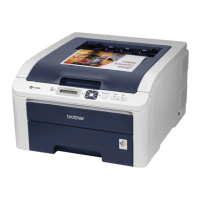
What to do if the Brother print server is not found during setup?
Make sure you have completed the IP address setting of the Brother print server before installing the network print software or printer driver.
What to do if the wireless network connection of Brother Print Server is sometimes disabled?
The environment where your Brother printer and other wireless devices are located may cause connection problems. Ensure the Brother machine is not near concrete or metal framed walls and is not close to electric appliances like televisions, microwave ovens, or mobile phones.
Why I cannot make a necessary connection to the Brother Print Server?
A firewall on your computer might be the reason. It could be rejecting the network connection required for the print server. Try disabling the firewall and reinstalling the drivers.
What to do if my Brother machine/print server does not appear in Remote Setup, BRAdmin Light or BRAdmin Professional 3?
This issue may occur if a firewall on your computer is blocking the necessary network connection. Try disabling the firewall and then reinstalling the drivers.
Why my computer cannot find the Brother Print Server?
A firewall on your computer may be rejecting the necessary network connection. To resolve this, disable the firewall and reinstall the drivers.
What causes horizontal stripes on Brother printer output?
Horizontal stripes on your Brother printer output can be caused by several factors: * Dirt on charged electrode: Clean both electrodes. * Bend of tray ground spring: Replace the paper tray. * Toner attached on the develop roller: This problem will disappear by printing approximate 10 pages. If the same problem occurs, replace the toner cartridge. * Scratch on the heat roller: Replace the fuser unit. * HVPS control PCB failure: Replace the HVPS control PCB ASSY.
What to do if one color is light on Brother HL-3040CN?
If one color is printing lighter than it should on your Brother printer, there are several potential causes. It could be due to dirt on the exposure drum electrode, develop roller electrode, or belt unit electrode, so clean both electrodes in these cases. Another reason might be dirt on the LED array, so wipe the dirt off with a clean, soft, and lint-free cloth. Other possible causes include lifting of LED ASSY, so re-assemble the LED ASSY, toner/new sensor PCB failure, so replace the toner cartridge of the appropriate color, HVPS control PCB failure, high-voltage power supply PCB failure, LED head control PCB failure, or main PCB failure. In these cases, replace the corresponding ASSY.
Why is my Brother HL-3040CN Printer printing a light on the whole page?
If your Brother printer is printing light on the whole page, it could be due to several reasons. It may be caused by HVPS control PCB failure, high-voltage power supply PCB failure, engine PCB failure, main PCB failure, LED head control PCB failure, LED ASSY failure, or Registration mark L PCB failure. In these cases, replace the corresponding ASSY.
How do I resolve horizontal lines on my Brother printouts?
If you're seeing horizontal lines on your Brother printer's output, it could be due to several reasons. It might be due to dirt on charged electrode, so clean both electrodes. Another cause may be a Paper tray ground terminal provided in machine body, so correct bending of paper tray ground terminal. Toner attached on the develop roller might be another reason, this symptom might disappear after making approximate 10 prints. A scratch on the heat roller could also be the reason, so replace the fuser unit. Other potential causes include HVPS control PCB failure or High-voltage power supply PCB failure, so replace the corresponding ASSY.
What causes vertical streaks on Brother HL-3040CN Printer prints?
Vertical streaks on your Brother printer prints can be caused by several factors. It could be due to dirt in the paper feed system, so wipe the dirt off. Another cause may be a dirty exposure drum, so clean the drum unit. Other reasons include a bend of tray ground spring, in this case, replace the paper tray, a scratch on the heat roller, in this case, replace the fuser unit, or an LED ASSY failure, so replace the LED ASSY.
| Color | Yes |
|---|---|
| N-up printing | 4, 9, 16, 25 |
| Duplex printing | No |
| Print technology | LED |
| Maximum resolution | 2400 x 600 DPI |
| Time to first page (black, normal) | 16 s |
| Print speed (black, normal quality, A4/US Letter) | 16 ppm |
| Maximum internal memory | 544 MB |
| Sound power level (standby) | 30 dB |
| Sound pressure level (printing) | 53 dB |
| Total input capacity | 250 sheets |
| Total output capacity | 100 sheets |
| Custom media width | 76.2 - 220 mm |
| Maximum print size | 216 x 356 mm |
| Custom media length | 116 - 406.4 mm |
| Paper tray media types | Plain paper, Pre-Printed, Recycled paper |
| Paper tray media weight | 60 - 105 g/m² |
| Non-ISO print media sizes | Legal |
| ISO A-series sizes (A0...A9) | A4, A5, A6 |
| ISO B-series sizes (B0...B9) | B5, B6 |
| Maximum ISO A-series paper size | A4 |
| Multi-Purpose Tray media weight | 60 - 163 g/m² |
| Interface | - |
| Power consumption (active) | 480 W |
| Display | LCD |
| AC input voltage | 220 - 240 V |
| AC input frequency | 50 - 60 Hz |
| Power consumption (standby) | 70 W |
| Power consumption (PowerSave) | 8 W |
| Package weight | 23.500 g |
| Maximum duty cycle | - pages per month |
| Number of print cartridges | 4 |
| Standard interfaces | Ethernet |
| Mac operating systems supported | Mac OS X 10.3 Panther, Mac OS X 10.4 Tiger, Mac OS X 10.5 Leopard, Mac OS X 10.6 Snow Leopard, Mac OS X 10.7 Lion |
| Server operating systems supported | Windows 2000 Advanced Server, Windows 2000 Server, Windows Server 2003, Windows Server 2003 x64, Windows Server 2008, Windows Server 2008 R2, Windows Server 2008 x64 |
| Windows operating systems supported | Windows 2000, Windows 2000 Professional, Windows 7 Home Premium, Windows 7 Home Premium x64, Windows 7 Professional, Windows 7 Professional x64, Windows 7 Starter, Windows 7 Starter x64, Windows 7 Ultimate, Windows 7 Ultimate x64, Windows Vista Business, Windows Vista Business x64, Windows Vista Home Basic, Windows Vista Home Basic x64, Windows Vista Home Premium, Windows Vista Home Premium x64, Windows Vista Ultimate, Windows Vista Ultimate x64, Windows XP Home, Windows XP Home x64, Windows XP Professional, Windows XP Professional x64 |
| Sustainability certificates | ENERGY STAR |
| Dimensions (WxDxH) | 409 x 466 x 250 mm |
|---|
General introduction to the printer and its network capabilities, including supported operating systems.
Details on the basic network functions supported by the machine, such as printing and management utilities.
Explains different network connection methods like peer-to-peer, shared printing, and wireless examples.
Describes the network protocols supported by the print server, including TCP/IP and other protocols.
Basic steps required to print over the network using the TCP/IP protocol.
Explains essential network addressing concepts like IP address, subnet mask, and gateway for setup.
Provides a visual guide outlining the steps for configuring network settings.
Guides on configuring the printer's IP and subnet mask using the BRAdmin Light utility.
Instructions on configuring network settings via the printer's control panel.
Details alternative methods for configuring the machine for network use.
Steps to modify print server settings using the BRAdmin Light utility.
Advanced settings modification using BRAdmin Professional 3 for Windows users.
Instructions for changing settings via a web browser interface.
How to modify print server settings using the printer's control panel.
Alternative methods for changing the printer's network settings.
Introduction to wireless network setup for the HL-3070CW model.
Defines key terms like SSID, channels, authentication, and encryption for wireless setup.
Provides a flow chart for configuring wireless network settings.
Steps to verify the existing wireless network setup before configuration.
Outlines the different methods available for configuring the wireless connection.
Guides on setting up wireless in infrastructure mode using the installer application.
Instructions for configuring wireless in ad-hoc mode for Windows.
Guides on setting up wireless in infrastructure mode for Macintosh users.
Instructions for configuring wireless in ad-hoc mode for Macintosh users.
Introduction to using control panel features for wireless setup via SES/WPS/AOSS.
Step-by-step guide for WPS/AOSS wireless setup using the control panel.
Introduction to configuring wireless using the Wi-Fi Protected Setup PIN method.
Detailed steps for wireless setup using the PIN method.
Description of the printer's control panel components and their functions.
Guide to configuring TCP/IP settings via the control panel's Network menu.
Guide to setting the printer's IP address through the control panel.
Guide to setting the printer's subnet mask through the control panel.
Guide to setting the printer's gateway address through the control panel.
Procedure to restore all network settings to their factory default values.
Instructions to print the machine's current network status and settings.
Introduction to the wizard for automating printer driver installation.
Describes different connection types supported by the Driver Deployment Wizard.
Detailed guide on how to use the Driver Deployment Wizard for installation.
Using a standard web browser to manage the printer and its settings.
Step-by-step instructions for configuring the printer via a web browser.
Introduction to peer-to-peer network printing setup for Windows users.
Steps to set up the printer's TCP/IP port for network printing.
References to other sections for further information on IP configuration.
Introduction to using the Internet Printing Protocol (IPP) for printing.
Instructions for setting up IPP printing on various Windows versions.
How to use alternative URLs for IPP printing configurations.
References to other sections for IP address configuration.
Introduction to network printing for Macintosh using the BR-Script 3 driver.
Guide on selecting and configuring the printer driver for Macintosh.
Introduction to the printer's network security features and protocols.
Definitions of key security concepts and terminology used in the manual.
Lists and describes the security protocols supported by the print server.
How to enable or disable network protocols and security methods.
Best practices for securing the network printer using management utilities.
Guide to securely printing documents over the internet using the IPPS protocol.
Setting up email notifications with POP before SMTP or SMTP-AUTH.
Procedures for creating and installing SSL/TLS certificates for secure communication.
Introduction to troubleshooting common network issues encountered with the machine.
Solutions for common issues like CD-ROM not starting or firewalls blocking connections.
Troubleshooting steps when the printer is not found during network setup.
Solutions for issues where print jobs are not printed or errors occur during printing.
Guides for troubleshooting specific protocols like IPP and Web Based Management.
Solutions for common wireless connection issues and setup problems.
Lists and explains available services for accessing the Brother print server.
Advanced methods for IP address configuration using DHCP, BOOTP, RARP, ARP, TELNET.
Steps for installing drivers when connecting to a shared printer on the network.
Guide for installing drivers using Web Services on Windows Vista.
Technical details about the print server's capabilities for wired and wireless networks.
Lists default settings and configurable options for network parameters.
Information regarding open source software licenses, including OpenSSL and gSOAP.
Details about gSOAP software licensing and limitations.
Information about WestHawk Ltd. SNMP software licensing and usage.

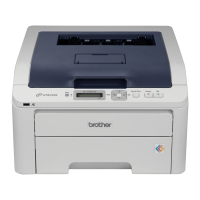
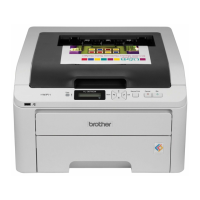
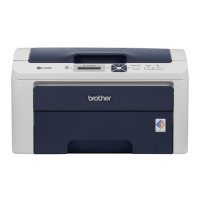
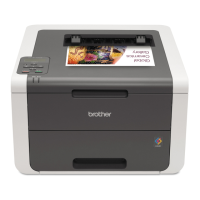

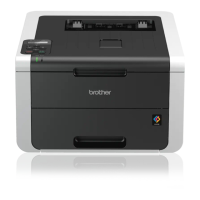
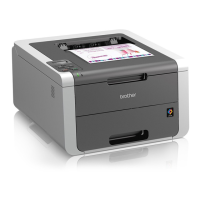

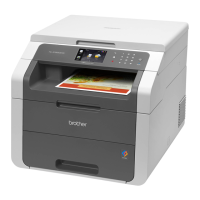
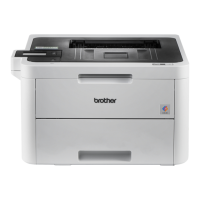

